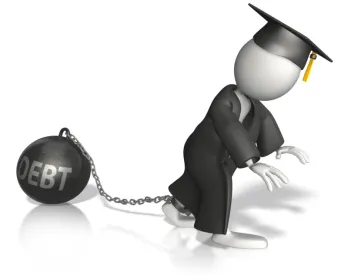A decision this month out of the Bankruptcy Court in Manhattan (SDNY) could have a significant impact on the market for student loan securitizations. Student loan asset-backed securities (SLABS) are unsecured, but market participants typically assume that the underlying student loans are not dischargeable in bankruptcy. A new ruling by the chief judge of the SDNY’s Bankruptcy Court challenges this assumption.
In Rosenberg v. N.Y. State Higher Education Services Corp. (Jan. 7, 2020), Chief Judge Cecelia Morris discharged the debtor’s student loans and vigorously pushed back on the “myth” that it is “impossible to discharge student loans.”
The debtor is a Navy veteran who graduated from law school in 2004, but worked as an attorney only briefly. He missed relatively few payments over 10+ years before filing for bankruptcy, at which time he reported negative monthly income. His student loan debt exceeded $220,000.
Chief Judge Morris found that the debtor had shown the “undue hardship” required by statute and met the Second Circuit’s three-part test for discharge, which dates back to 1987. The court wrote: “[F]or a multitude of petitioners like Mr. Rosenberg, who have been out of school and struggling with student loan debt for many years, the test is fairly straight-forward and simple.” Chief Judge Morris refused to follow subsequent cases imposing higher burdens: “This Court will not participate in perpetuating these myths.” Chief Judge Morris expressly rejected the position “that filing a bankruptcy petition in order to rid oneself of a crushing $300,000+ of student loan debt could ever be considered ‘bad faith.” Instead, any debt may be discharged — “no matter what kind of debt it is.”
The court found that the debtor satisfied each requirement for proving “undue hardship” under governing law:
1.If forced to repay the loans, can the debtor maintain a “minimal” standard of living based on current income and expenses? The court found it dispositive that the debtor reported a negative monthly income and his loan of approximately $220,000 was due and payable. The debtor “has successfully proven that he cannot immediately pay his Student Loan in full based on his current income.”
2.Do additional circumstances exist indicating that this state of affairs is likely to persist for a significant portion of the repayment period? Because the repayment period had ended and the loan was due in full, the court found that this prong was satisfied. The court held that the debtor need not show that his inability to pay was “going to exist forever” or was not created by “choice.”
3.Did the debtor make good faith efforts to repay the loan? The court emphasized that the debtor missed few payments over many years, made payments even when his account was in forbearance, and actively communicated with the loan servicer.
Takeaway
Rosenberg is one decision from one court, with very debtor-friendly facts, but it may still prove significant. The SDNY is a well-respected court, and the ruling comes from its chief judge. Significantly, the decision also reflects growing, widespread public attention and concern over mounting student loan debt. It’s still too early to tell, but this decision may prompt an increase in student loan discharge petitions. If this gains traction, market participants may no longer be safe in assuming that SLABS are immune from bankruptcy risk.




 />i
/>i

